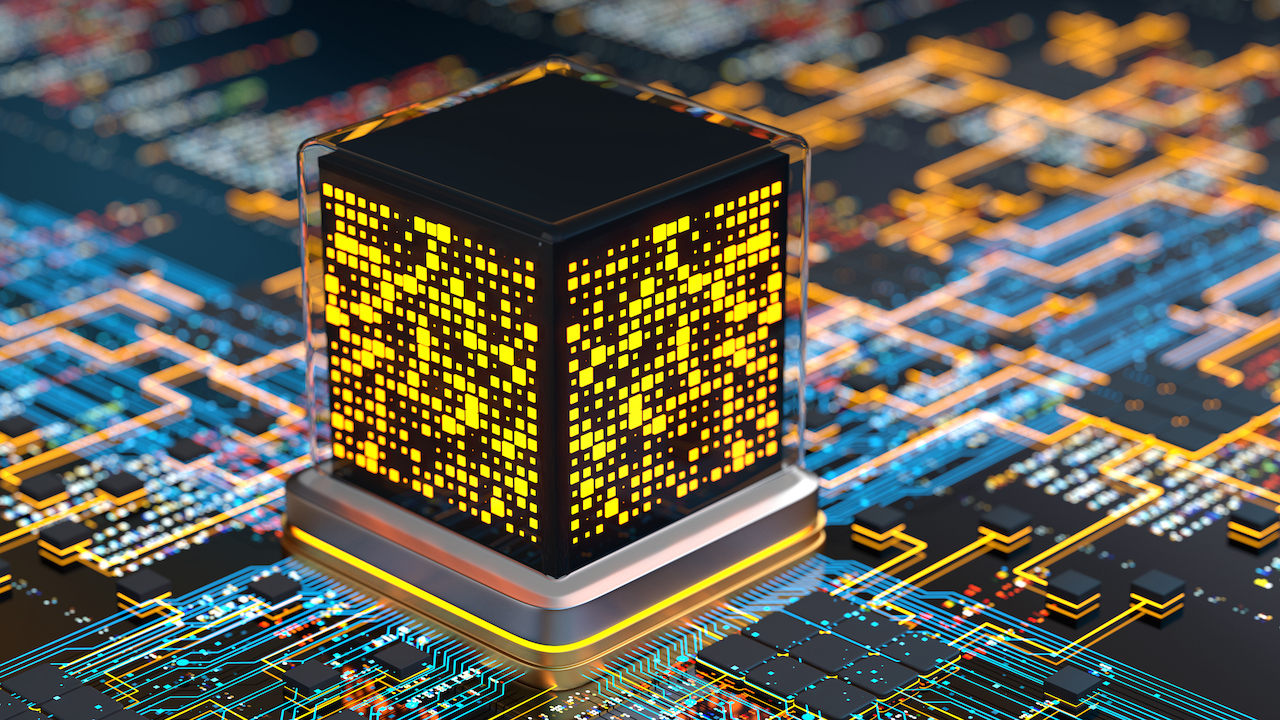Archive
Supercomputing in science
| 23 Sep | MATLAB v kocke: možnosti systému MATLAB v príkladoch a aplikáciách Ing. Michal Blaho Pozývame vás na náš ďalší odborný webinár, ktorý sa zameral na možnosti a praktické ukážky využitia systému MATLAB v rôznych aplikáciách. Podujatie sa uskutočnilo online v septembri a prinieslo prehľad o tom, ako bolo možné MATLAB efektívne využiť pri riešení reálnych problémov a úloh. Nezabudnite si pozrieť záznam podujatia! | |
| 17 Jul | Digital Twins of Society: HPC-Powered Simulations PROF. DR. F. LERON SHULTS A DR. JUSTIN LANE Webinár sa zameral na to, ako pokročilá umelá inteligencia a multiagentové simulácie prispievajú k modelovaniu vzniku a vývoja spoločenských hnutí, systémov presvedčení a odolnosti spoločností. Prof. Dr. LeRon Shults predstavil, ako kultúrna kybernetika a kognitívna veda formujú modelovanie skupinovej identity, náboženstva a extrémizmu. Dr. Justin Lane priblížil technickú implementáciu vrátane simulácií polarizácie spoločnosti, šírenia dezinformácií a digitálnych dvojčiat pre testovanie národných politík. | |
| 11 Jún | SLOVENČINA V ÉRE VEĽKÝCH JAZYKOVÝCH MODELOV (S PODPOROU SUPERPOČÍTAČA LEONARDO) Marek Dobeš In our project, we aim to overcome the language barrier of Slovak through strategies that can also be applied to other low-resource languages. We generate bilingual data using Slovak books and the LLaMA 3.3 70B Instruct model, creating datasets for translation and improving machine-generated Slovak. With the help of Gemini Flash and the PLOS database, we summarize scientific articles in Slovak to support model training in specialized terminology. Additionally, we are developing a dataset from Slovak sources to enhance cultural context and improve the handling of Slovakia-specific topics. | |
| 27 Maj | VYUŽITIE HPC V SLOVENSKOM HYDROMETEOROLOGICKOM ÚSTAVE Mgr. Mária Derková, PhD. Since 2021, SHMÚ has been using the modern computing system NEC-LX, which significantly contributes to weather forecasting. Its main tool is the ALADIN numerical weather prediction model, which runs continuously on this system. In the lecture, we will demonstrate how ALADIN is used in various areas — not only in weather forecasting, but also in computations related to climate, water, and air quality. | |
| 13 Maj | TRÉNOVANIE STROJOV NA DETEKCIU ĽUBOVOĽNÉHO OBJEKTU RNDr. Andrej Lúčny, PhD. Modern models enable robots to recognize objects from a predetermined set of categories. However, the challenge remains to perceive any object as an independent entity. A breakthrough came with visual transformers (2020), which can derive an object’s location as a byproduct of image classification. The DINO model (2021), trained without annotations, has been successfully used to guide a humanoid robot’s attention. | |
| 5 Maj | DIGITÁLNA FORENZIKA V ÉRE VEĽKÝCH DÁT Dr. Mazhar Malik Handling digital forensics in large-scale environments demands immense computational resources. This session will demonstrate how HPC accelerates the forensic analysis of cyber incidents, supports large dataset examination, and enables faster threat identification. Use cases from industry and public sector investigations will be discussed. | |
| 10 Dec 16:00 | Destination Earth – Vysokovýkonné počítanie pre počasie a klímu Jozef Vivoda z ECMWF – Eurpoean Centre for Medium range Weather Forecast Destination Earth (DestinE) is a flagship initiative of the European Union aimed at creating a digital model of planet Earth (Digital Twin). Due to societal and climate changes, EU countries are increasingly exposed to extreme weather impacts. Our ability to predict these changes in both the short and long term is hindered by the low regional accuracy of existing climate models. To overcome this limitation, the DestinE project is developing two distinct digital replicas of the complex Earth system. These digital twins will enable seamless integration of real-time observations with high-resolution forecasts and predictions. One of these digital twins will focus on weather-related and geophysical extremes, while the other will serve climate change adaptation purposes. | |
 | 26 Nov 16:00 | What
Is Needed to Train a Slovak Large Language Model Radovan Garabík Ľudovít Štúr Institute of Linguistics of the Slovak Academy of Sciences, v. v. i. In recent years, large language models have dramatically changed natural language processing. A breakthrough was the use of transformer architectures, which are particularly suitable for processing larger text contexts, and generative language models. What is required to create such a model that communicates in Slovak? We present the existing huge Slovak text corpora and the work that lead to the creation of the mistral-sk-7b large language model. |
| 12 Nov 16:00 | Analysis of Large Genomic Data and Their Application in Clinical
Diagnostics Jaroslav Budiš z Vedeckého parku Univerzity Komenského v Bratislave Modern sequencing technologies that enable the digitization of genomic material have brought revolutionary changes in the approach to diagnosing and researching various human diseases. A key element of the process is bioinformatics tools and procedures used to analyze digitized genomic data. While these technologies have introduced new possibilities for clinical diagnostics, they also present challenges related to processing large volumes of data. | |
 | 11 Nov 18:00 | High-Performance Computing and its use in bioinformatics Michal Tamáš University of Padova, Department of Molecular Medicine High-Performance Computing (HPC) has become an indispensable tool in bioinformatics, driving advances in data analysis, modeling, and simulation. As biological data grows exponentially due to high-throughput technologies such as next-generation sequencing, proteomics, and metabolomics, traditional computing resources often need to be improved to handle the volume, variety, and velocity of the data. HPC provides the computational power and storage capacity required to process and analyze large-scale datasets efficiently. It enables the execution of complex algorithms for tasks such as genome assembly, molecular dynamics simulations, protein structure prediction, and phylogenetic analysis. |
| 29 Okt 13:30 | Climate
modelling and current research topics in climate science Peter Kuma Stockholm University, Department of Meteorology (MISU) In recent decades, climate models have become an integral part of climate science. They allow us to not only predict the Earth's future climate but also to reconstruct the past and better understand the present climate. In this talk, you will learn how they work, what supercomputers they run on, and the broader context of climate change and human impact on the climate. | |
| < | 22 Okt 16:00 | Unraveling the Mysteries of DNA Using High-Performance Computing DUŠAN RAČKO Ústav polymérov SAV, v. v. i. The DNA molecule that carries the instructions for life is like a super-twisted rope or spiral ladder forming a shape known as a double helix. It's not just an ordinary molecule - it's a polymer. That is, it forms long chains of repeating building blocks. Thanks to its unique shape, DNA can twist, bend and form complex structures, including knots and chains, which are special kinds of topologies about which scientists are still learning a lot. |
 | 14 Maj 16:00 | Úvahy o úlohe vysoko výkonných počítačov (HPC) a grafických procesorov v genómovej analýze DNA MILOSLAV KARHÁNEK Biomedicínske centrum SAV, v. v. i. Využitie „open source“ bioinformatických nástrojov pre genómovú analýzu na HPC môže byť problematické z hľadiska ich slabej paralelizácie na úrovni jednej analyzovanej DNA vzorky. Paralelizácia týchto nástrojov na HPC je možná tak, že sa analýzy spustia na viacerých vzorkách. Využívaniu HPC dnes konkurujú grafické procesory a karty, na ktorých je možná paralelizácia už na úrovni jednej vzorky. Dobrým riešením by preto mohlo byť umožnenie kombinovaného využitia HPC a grafických kariet a veľkokapacitného úložiska. |
| 23 APR 16:00 | Výskum
konformačných preferencií prirodzene neusporiadaného proteínu
tau ONDREJ CEHLÁR Neuroimunologický ústav SAV, v. v. i. Prirodzene neusporiadaný proteín tau, ktorý zohráva úlohu v patogenéze Alzheimerovej choroby, nenadobúda za fyziologických podmienok stabilnú 3D štruktúru, na rozdiel od globulárnych proteínov, ale fluktuuje medzi rôznymi konformáciami. Jeho štruktúru je možné opísať ako súbor prechodných konformácií, ktoré sú rôznou mierou zastúpené – tzv. konformačný ensemble. Na jeho popis je možné využiť rôzne experimentálne metódy, ako napríklad NMR spolu s výpočtovými metódami simulácie molekulovej dynamiky (MD), na ktorú využívame HPC prostriedky. Jedným príkladom využitia je popis konformačného správania krátkeho peptidu z prolínovej oblasti tau proteínu vo voľnom stave pomocou MD simulácie, ktorý je možné porovnať s konformáciou získanou pomocou Röntgenovej kryštalografie z komplexu tau peptidu so špecifickou protilátkou. | |
| 9 Apr 17:00 | Zvedavá umelá inteligencia MATEJ PECHÁČ Faculty of mathematics, physics and informatics, Comenius University Zvedavosť, ako druh motivácie, je jedným zo základných fenoménov vyskytujúcich sa u živočíchov s vyššou kogníciou. Poháňa a riadi ich správanie tak, aby boli naplnené ich potreby na rôznej úrovni. Je základnou vlastnosťou, ktorá zabezpečuje neustály vývoj jedinca a vedie k jeho zdokonaľovaniu. Na tejto prednáške si ukážeme, ako formalizovať zvedavosť / motiváciu a ako ju pridať k AI agentom. Zároveň na jednej z veľmi ťažkých úloh v oblasti rozhodovania dokážeme, že pridanie zvedavosti výrazne pomôže s jej riešením. | |
| 12 Mar 17:00 | Atomistický pohľad na biopolyméry použitím HPC ZUZANA BENKOVÁ Ústav polymérov SAV, v. v. i. Ako je možné zistiť, či sa COVID alebo iné vírusy môžu prenášať cigaretovým dymom? Ako je možné pomocou polymérov zabrániť nežiadúcej imunitnej odpovedi organizmu? Pomocou molekulovo-dynamických simulácií využitím HPC je možné študovať biochemické javy na atomistickej úrovni a vysvetliť tak mnoho experimentálnych pozorovaní, predpovedať nové javy a procesy alebo správanie sa biopolymérov, ako aj simulovať podmienky nedostupné experimentu. | |
| 7 Dec 17:00 | Modern technologies and new challenges in automatic speech processing MARIÁN TRNKA Institute of Informatics SAS v.v.i. The lecture introduced the use of automatic speech processing in several areas. The speaker explained what tasks are typical for different areas and also what algorithms and data are used to solve them. | |
 | 22 Nov 17:00 | Learning about geodynamic processes and the structure of the Earth using geoscientific data modeling
JÁN VOZÁR Institute of Earth Sciences SAS, v.v.i. During the lecture, the participants learned what geosciences are and what their contribution is to learning about the Earth. The speaker explained the principles of some geophysical methods that are used to model individual parameters of the Earth. |
 | 7 Dec 17:00 | Quantum computing in practice ZORA HOLLÁ IBM Global Markets – Ecosystem The presentation briefly summarizes what is needed for quantum computers to be used in practice. |
| 22 Nov 17:00 | Quantum complexity and simulations DANIEL NAGAJ National Center for Quantum Technologies We will discuss when and where it makes sense to use quantum computing, and which problems and systems will be difficult to calculate even on quantum computers. | |
| 8 Nov 17:00 | Quantum programming DANIEL REITZNER VTT Technical Research Centre of Finland We will talk about how current quantum processors are doing from a practical and technical point of view, and how it fits into the field of high-performance computing. | |
| 18 Okt 17:00 | Quantum computing and algorithms MÁRIO ZIMAN National Center for Quantum Technologies You will learn how we can theoretically apply quantum rules to calculations. | |
 | 4 Okt 17:00 | An introduction to the physics of quantum computing VLADIMÍR BUŽEK National Center for Quantum Technologies During the lecture on Introduction to the Physics of Quantum Computing, the speaker explained what the rules are that are used when talking about quantum computing and how they relate to the physical properties of quantum systems. |
| 24 May 17:00 | Natural and artificial intelligence TOMÁŠ HROMÁDKA Institute of Neuroimonulogy SAS What are the similarities and differences between the intelligence of the biological system itself and the artificial intelligence? The effort to model the processes taking place in the brain was one of the inspirations for the development of artificial intelligence. We will talk about how information is processed in the living brain, the extent to which such artificial intelligence inspiration is usable and justifiable, and where the two types of intelligence differ. | |
| 10 May 17:00 | Current problems of reinforcement learning MICHAL CHOVANEC Tachyum Reinforcement learning - what it is and how it works, including demonstrations. The main points of the lecture was key achievements: Atari, GO, Hide and seek and demonstrations of deep reinforcement learning and AlphaGO. The problem of exploitation: rare rewards, such as in roles: Montezuma’s revenge, Hide and seek. We examine the state space as "effective." | |
| 26 Apr 17:00 | Use of ML / AI for applications in chemistry - potential drugs on Covid-19 MARIÁN GALL COO SAS - Computing Centre How can we transform the structure of molecules into a form that neural networks understand? In this lecture, we want to summarize our efforts to replace the computationally expensive "docking" of molecules into the cavity of a target protein by machine learning and neural network methods. The target protein under study is 3CLpro SARS-CoV-2 (6WQF), which plays a key role in SARS-CoV-2 virus replication. How successful are these methods in preselecting large drug databases to select potential drugs for covid-19? | |
| 12 Apr 17:00 | Introduction to applications of complex calculations in medicine ZUZANA ČERNEKOVÁ, PETER BLUSKA Department of Computer Graphics and Vision, Department of Applied Informatics FMFI UK, Rádiológia s.r.o. In medicine, in recent years, observing the exponential growth of data and their processing requires increasingly sophisticated systems. The first part of the presentation outlined the needs and problems of modern medicine with emphasis on the field of radiology. In the second part we will get acquainted with the way of using neural networks to develop algorithms recognizing diagnoses in radiological images. | |
| 29 Mar 17:00 | Deep learning and its basic applications for computer vision ANDREJ LÚČNY Department of Computer Science FMFI UK When we use some model of deep learning, it is almost impossible to understand how and why it works based on its architecture. To do this, we need to know the history of how and through what versions the researchers worked on the given architecture. In the lecture we will summarize the basic milestones of this history, starting with the perceptron and ending with the first successful deep neural networks. | |
| 15 Mar 17:00 | Introduction to artificial neural networks and evolutionary algorithms IVAN SEKAJ Department of Robotics and Cybernetics, FEI STU The presentation defines the terms biological and mathematical neuron, neural networks and their learning, selected architectures of artificial neural networks (UNS) and UNS applications, neuromorphic computing technologies, evolutionary algorithms (EA), genetic algorithm, bio-inspired algorithms, parallelization of EA and HPC and briefly explain their principles. | |
| 1 Mar 17:00 | Use of HPC in operational weather forecast in Slovakia JOZEF VIVODA Slovak hydrometeorological institute SHMU has been operating HPC since 2004. The primary application is the ALADIN model, developed within the international consortia ALADIN and currently ACCORD. This application contains hydride parallelism (combination of OpenMP, MPI) with the ability to set the length of the vector of internal cycles, so it is suitable for vector and scalar architectures. | |
| 15 Feb 17:00 | Modelling of 2D systems properties using the Quantum Monte Carlo methods IVAN ŠTICH Institute of Physics SAS Prof. Štich is a partner of the TREX CoE - the European Center of Excellence in Exascale Computing (Horizon 2020 project). The lecture is focused on quantum Monte Carlo computational methods, for which the Nobel Prize in Physics was awarded in 2020 and which are well suited for the exascale computing. You will see a demonstration of calculations that required 30 million core hours to run. | |
2021 | ||
| 7 Dec 17:00 | Federated distributed computing Ladislav Hluchý Institute of Informatics SAS Thanks to powerful servers and large data storages, a significant progress can be seen in distributed computing, where the performance achieved is very high (dozens of PFLOPS). In a not-too-distant past we saw the computing clusters being built from personal computers, progressing to powerful servers and data storage units later on. Since 2000 there was a boom of building grid-based distributed infrastructures with distributed operation systems. With the birth of cloud technologies, distributed computing has taken on a new dimension. IT companies such as Google, Amazon, Microsoft, IBM, ATOS brought their technologies to market. The federated cloud infrastructures were introduced, with the support of the European Commission, to avoid the so-called vendor lock-in situation. The individual national cloud infrastructures can join the federation, allowing researchers to run their calculations on an infrastructure that does not impose technological constraints. | |
| 23 Nov 17:00 | Short guide to software parallelization Jaroslav Suchánek Biomedical Research Center, SAS The lecture will highlight few of the most important aspects of example programs and analyses published on the webpage http://www.jsf.name/lectures.html and https://chipster.csc.fi, for example: MS Visual Studio Community and MS MPI. C/C++: preprocessor directives for multiplatform programming, function parameters called by value, reference and dereference, pointers, dynamic memory allocation, classes, stacks for better communication between processes, iterators, etc. MPI: point-to-point and collective communication. Genetic algorithms. Chipster: quick introduction to bioinformatics. Tips for useful reading, links and guidance for begginers. | |
| 9 Nov 17:00 | Operation systems in multiprocessor clusters Dušan Bernát Faculty of mathematics, physics and informatics, Comenius University The lecture focuses on explaining the basic terms, principles and issues in operation systems in multiprocessor architectures. The main areas of interest are process scheduling in a symmetric multiprocessing environment, system load measurement, memory allocation, and cluster file systems. | |
| 26 Okt 17:00 | Development of technology and computer architecture – from 1-processor serial computers to supercomputers Martin Šperka Computer museum, Centre of Operations SAS The presentation will summarize the main stages of accelerating computations due to the technology and architecture development from vacuum tube computers with serial ALUs (arithmetic-logical unit) to massively parallel architectures containing millions of processing units enabled by system-on-chip (SOC) technology with billions of transistors. | |
| 12 Okt 17:00 | Computer simulations and calculations as an essential tool in science Pavel Neogrády Faculty of Natural Sciences, Comenius University Do you want to learn why is the high-performance computing technology indispensable in science? This lecture will introduce - in a simple way - what types of issues the scientists face when modeling various systems and why is the HPC used to solve them. Simultaneously, we will explain methods and procedures essential in current scientific research. | |
| 29 Sep 17:00 | Current trends and visions in HPC in Slovakia. Lukáš Demovič, Filip Holka Centre of Operations SAS In the first part of the lecture you will learn what is a supercomputer and which technologies you can find inside. At the same time, we will show you current trends in building a new generation of supercomputers and how its’ performance and energy efficiency is evaluated. Supercomputer operation and monitoring issues will be covered, as well. The second part of the lecture will focus on the history of supercomputers in Slovakia and our plans for further development and participation in European structures and organizations. | |
2022 |
